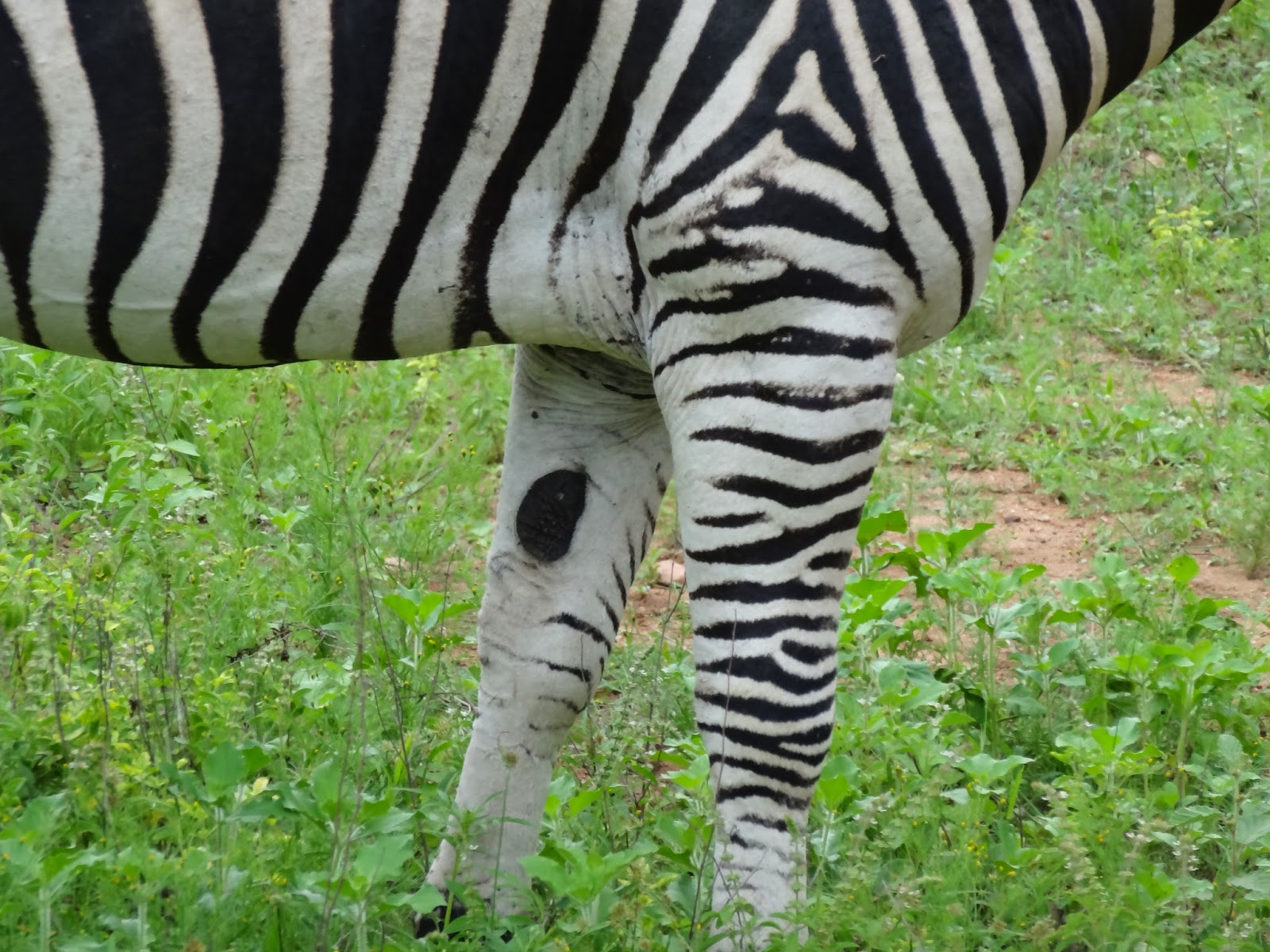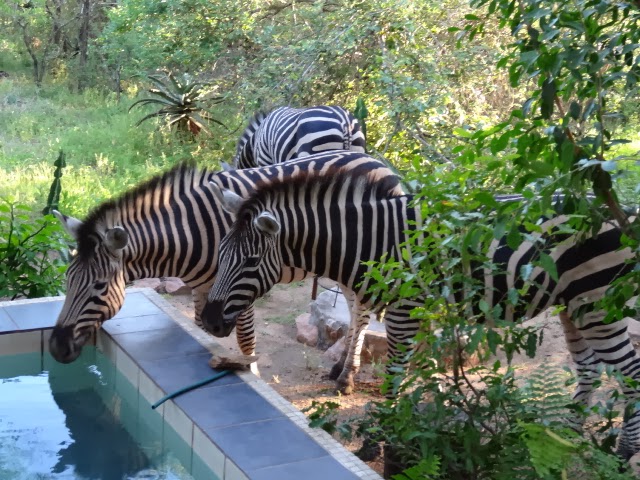 |
| Not all wildlife requires a daily supply of water, but the zebra does, never staying further away than 10 meters from a safe water supply, Picky drinkers, they taste the chlorinated pool water, only taking a sip, detecting the chemicals. |
Nothing can compare to the appearance of multiple visitors of a species. The excitement of watching them approach our veranda is indescribable. This isn’t to say that we don’t enjoy the “onesies” although it appears that a single animal is more hesitant to approach than several, based on “safety in numbers.”
When we first arrived, we noticed that zebras have a dark circular patch on the inner forelegs which are designed to accommodate the sharp end of the hoof when lying down. The zebra sleeps around 7 hours a night, lying down and these circular patches provide protection for their legs from injury when they’re at rest.
Please click this link for more interesting zebra facts.
 |
| Having never been so close to zebras in the past, we were curious as to these black spots on the interior of their front legs. |
 |
| The zebra’s unique stripes are comparable to an individual’s unique fingerprint. The black spots, protecting the legs from injury when at rest are equally as unique. |
 |
| The mineral lick has been appealing to the zebras and Kudu, so far. Warthogs and other smaller animals have little interest in it. |
 |
| Waiting their turn for a sip of water from the pool, occasionally kicking each other for dominance. All of the zebra visitors we’ve had thus far have been males. |
 |
| “My turn!” |
 |
| They couldn’t be more adorable. |
 |
| The Zebras seem to like munching on the greenery around this little tree. We’ve learned that wildlife doesn’t graze an area with the intent to “clean it out.” Instead, their instincts guide them to forage in an area for a short period and then move on to another area. Doing so, provides a continuous supply of food, especially during these rainy summer months. In the sparse winter months, the Zebras will dig up the roots of vegetation. |
Note: Typically, the holiday tourists begin leaving the area by January 10th at which point we’ll begin visiting some of the sites in the area. All the sites we’d like to visit are still swarming with tourists.
Also, it was one year ago today that we left the US (although we did return to various ports in Florida to wait to change ships to continue on our multiple cruises). Click here for the post from the day we left on January 3, 2013, writing about it on January 4, 2013.
